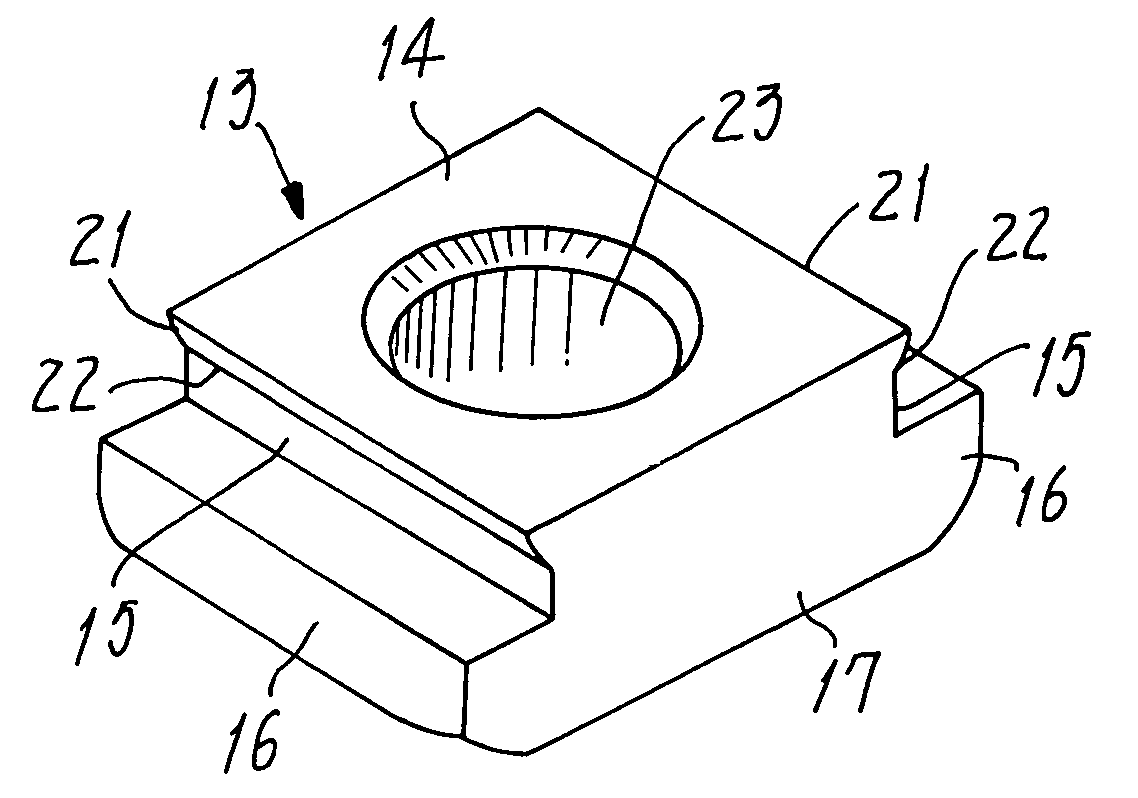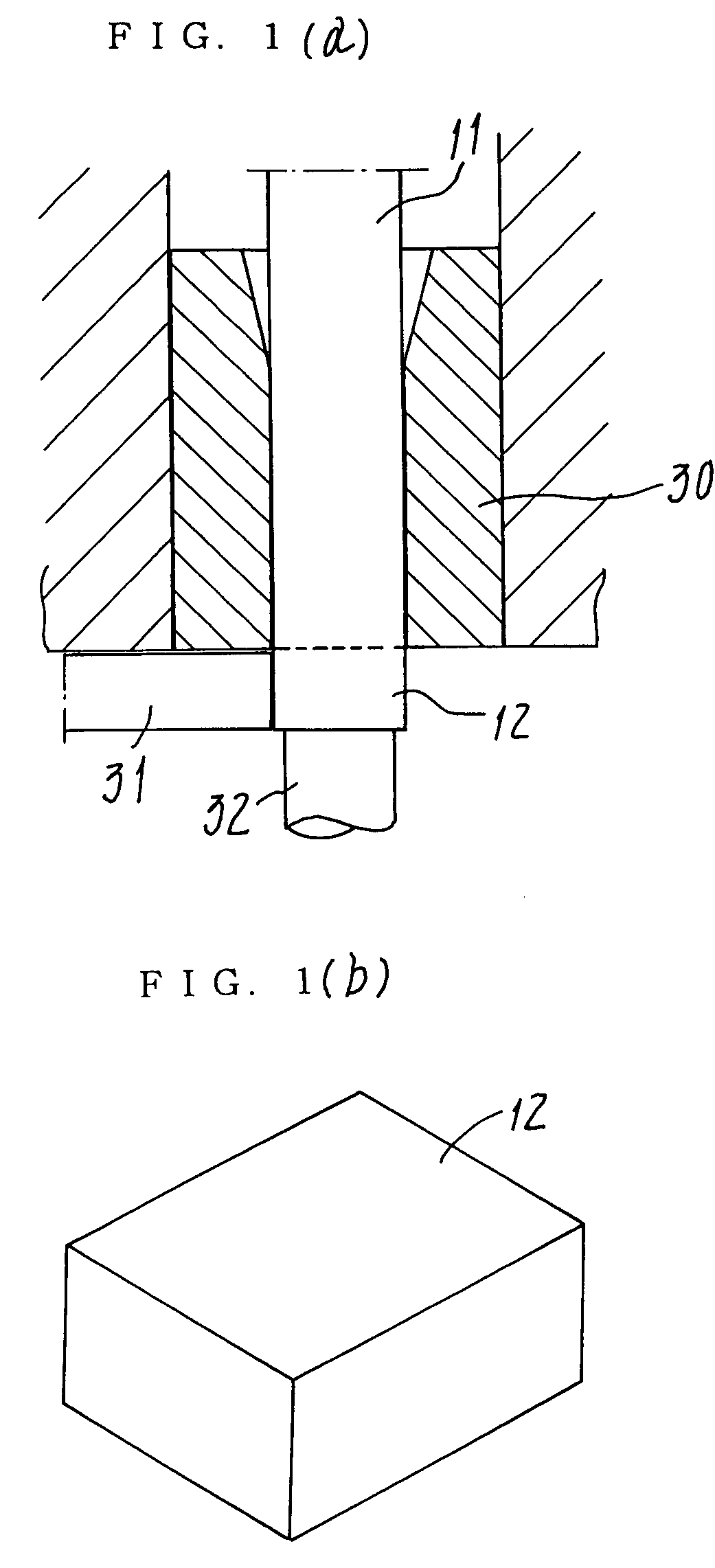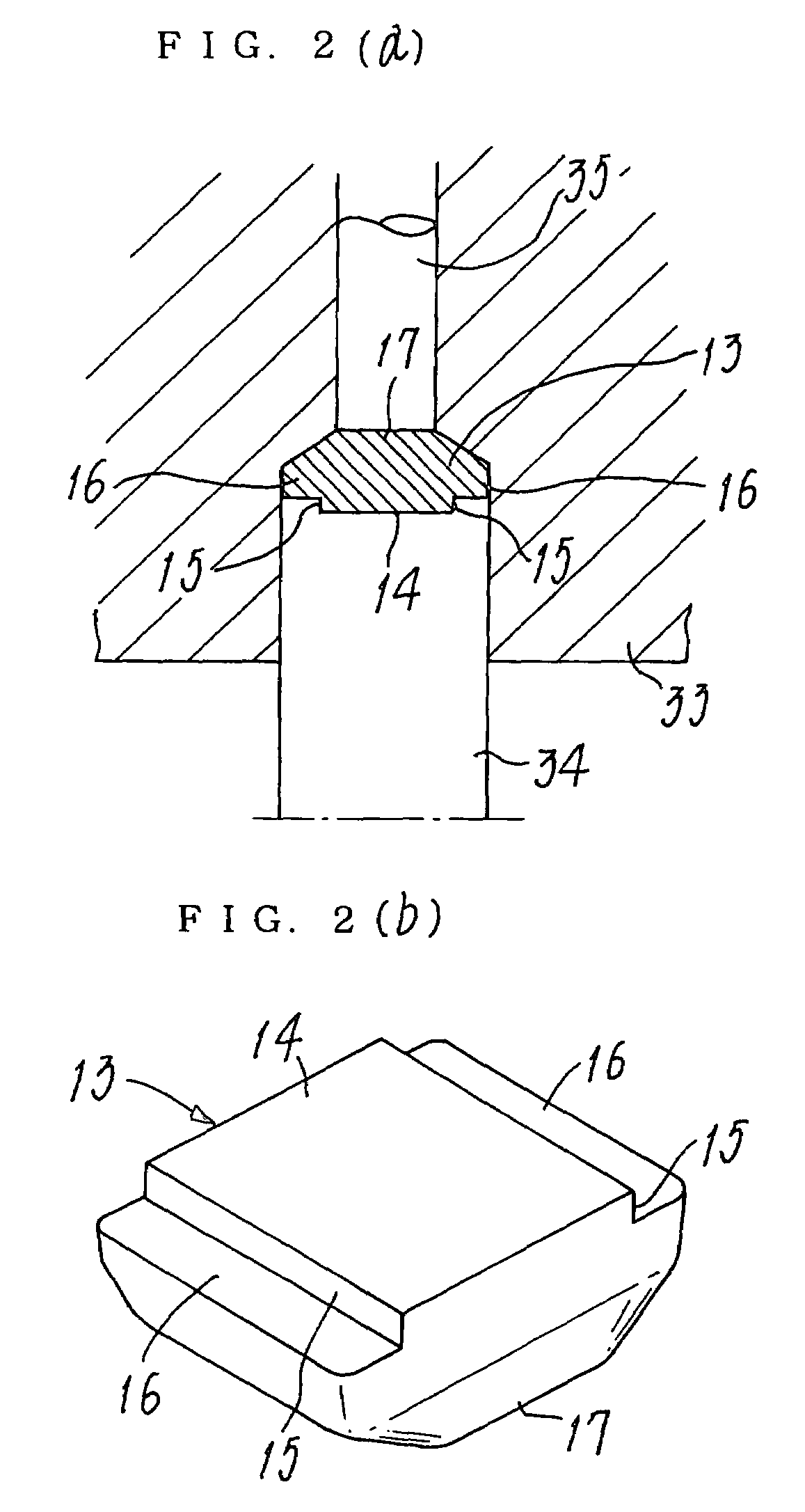Method of making self-piercing nuts
- Summary
- Abstract
- Description
- Claims
- Application Information
AI Technical Summary
Benefits of technology
Problems solved by technology
Method used
Image
Examples
Embodiment Construction
[0022]Now an embodiment of the present invention will be described referring to the accompanying drawings, in which FIGS. 1(a) to 5(b) show a nut bank that is being processed in an ordinary and widely used nut-former at the sequential steps for manufacturing a self-piercing nut.
[0023]FIGS. 1(a) and 1(b) show the first step of preparing a raw nut blank 12 of a required cut length corresponding to a self-piercing nut. A low-carbon steel rod 11 usually forming a coiled spring is placed in this case in and through a quill 30, and then a knife 31 severs from the rod 11 the blank 12 of said length projected from the quill. The reference numeral 32 denotes a stopper for determination of a distance equal to the given length.
[0024]FIGS. 2(a) and 2(b) show the second step of preliminarily swaging the raw nut blank 12 within a closed mold. A punch 34 of this mold has pressed this blank into a die 33, so as to give an unfinished nut blank 13. The thus swaged nut blank 13 will have a rough pilot...
PUM
 Login to View More
Login to View More Abstract
Description
Claims
Application Information
 Login to View More
Login to View More - R&D
- Intellectual Property
- Life Sciences
- Materials
- Tech Scout
- Unparalleled Data Quality
- Higher Quality Content
- 60% Fewer Hallucinations
Browse by: Latest US Patents, China's latest patents, Technical Efficacy Thesaurus, Application Domain, Technology Topic, Popular Technical Reports.
© 2025 PatSnap. All rights reserved.Legal|Privacy policy|Modern Slavery Act Transparency Statement|Sitemap|About US| Contact US: help@patsnap.com



